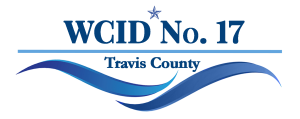PRV FAQ
PRV (Pressure Regulating Valve) FAQ
• What is a PRV?
A PRV, or Pressure Regulating Valve controls the water pressure in a home and protects the plumbing system. PRVs should be set to no higher than 80 psi. All homes in the WCID No. 17 district are required to have one.
• Is the PRV on the District’s side or homeowners?
A PRV is on the customer’s side of the meter box after the shut off valve. Customers are responsible for maintaining their PRV to help ensure water pressure is consistent.
• How do I know if my PRV is functioning properly?
We suggest homeowners check their PRV on an annual basis. If water pressure in the home increases or decreases significantly, the PRV should be checked by placing a water gauge on an outdoor spigot. Turn on the spigot and note the reading. On the PRV adjustment bolt, make a mark of the original setting and then turn it in either direction to increase or decrease the pressure allowed and turn on the spigot for a reading. Then return the PRV adjustment bolt to the previous set point and if the pressure has returned to the original reading then the PRV is functioning properly. If the reading has not returned to the original reading, then the PRV should be replaced with a new one.
• How much does a new PRV cost? Can I replace it or do I need to call a plumber?
The required type of PRVs can cost anywhere from $90-$200 and can be purchased at a big box store. A plumber will charge anywhere from $200-$800 for materials and labor but a homeowner with a moderate level of maintenance knowledge might be able to switch out their PRV.
• Don’t water utilities like WCID No. 17 control the water pressure?
Yes, we have valves that control water pressure but if there is a change in pressure due to a main break, individual PRVs at the customer’s home helps regulate the pressure and protects the homeowners plumbing system. Our service agreement states the customer must acknowledge the system water pressure may vary widely from time to time depending on equipment configuration and demand. A properly functioning customer shut-off valve and pressure relief valve (PRV) are required to be installed and maintained by the Customer on all District connections.
• Why are PRVs so prevalent in our area?
Due to the fact that water pressure within the Texas Hill Country is largely influenced by the uneven geology of the terrain, water pressure in distribution mains can range anywhere from 55 to more than 150 pounds per square inch (psi) depending on the elevation in the area. A PRV will help ensure the water pressure remains at a constant level in a customer’s home.
• What are the benefits of having a properly-functioning PRV?
– Increases the lifespan of pipes
– Reduces probability of pipe bursts
– Saves money on water



